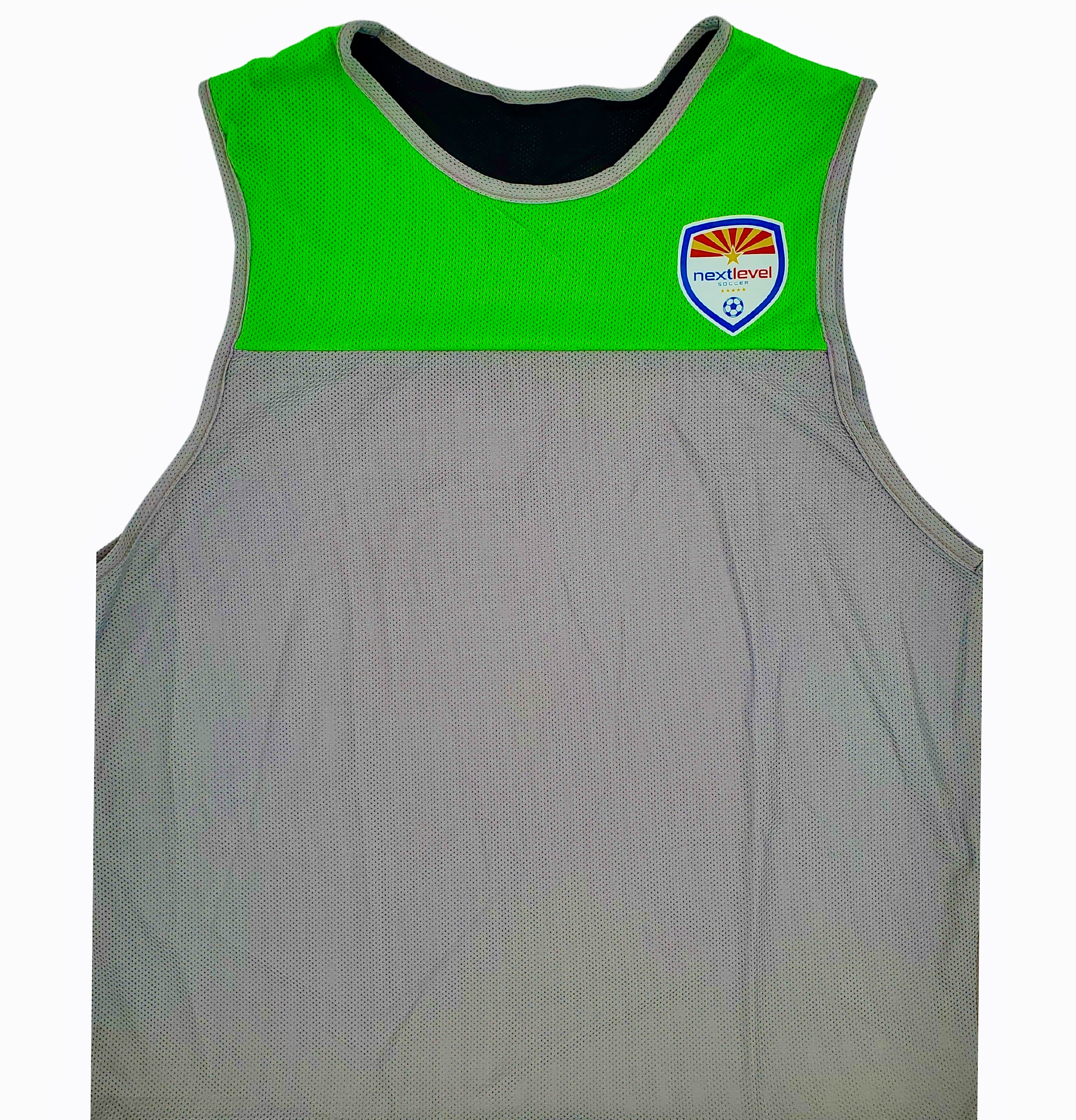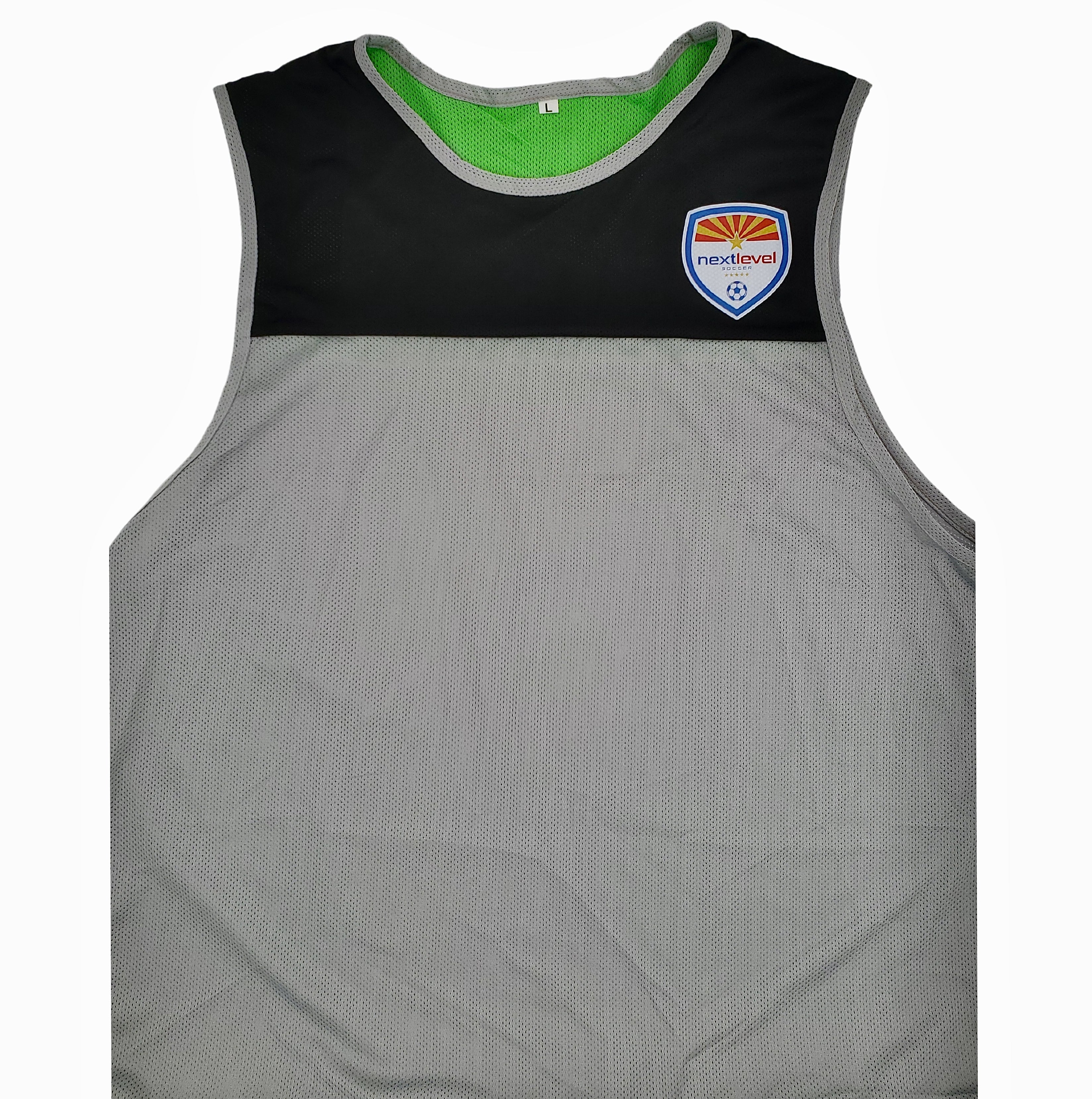
Custom Bibs created for Next Level Soccer

Custom Bibs created for Next Level Soccer
Why Scanning Is Important
Studies conducted by the English Premier League reveal that top players scan their surroundings as often as 0.6 times per second, equivalent to glancing over their shoulders about every two seconds (2). Dr. Geir Jordet and his team propose that players who frequently check over their shoulders tend to execute more precise passes. Conversely, players who seldom glance over their shoulders were found to have a lower accuracy rate of around 60% for their passes, whereas those frequently scanning their surroundings achieved an average accuracy of 83% (3).
Situational Awareness: By lifting their head and looking around, players get a comprehensive view of the field, their teammates, opponents, and the ball's position. This awareness is crucial in determining their next action.
Better Decision Making: With a clear understanding of the field, players can make informed decisions such as when to pass, dribble, shoot, or defend. They can identify opportunities and threats more effectively, making them more successful in their roles.
Anticipation: Regular scanning helps players anticipate the game's flow. They can predict their teammates' movements, anticipate opponents' strategies, and position themselves accordingly.
Improves Communication: By continually scanning the field, players can communicate more effectively with their teammates, providing them with vital information such as open spaces, potential threats, and opportunities for creating scoring chances.
Enhances Ball Control: Players who keep their heads up can control the ball better as they can see approaching opponents, track the ball's trajectory, and respond to changes more effectively.
Creates Scoring Opportunities: Scanning the field can help identify weak spots in the opposing team's defense, enabling players to exploit these areas and create scoring opportunities.
Enhances Defensive Capabilities: On the defensive side, scanning the field helps players track the movement of opposing players, allowing them to anticipate attacks and position themselves for successful interceptions or tackles.
Improves Timing: By observing the overall game, players can better time their passes, shots, runs, and tackles, which can significantly impact the game's outcome.
Develops Spatial Awareness: Regularly lifting the head up and scanning allows a player to understand the spatial relations between them, their teammates, their opponents, and the goal. This ability is critical in both offensive and defensive situations.
In summary, the practice of lifting the head and scanning the field makes a soccer player more adaptable, strategic, and effective on the pitch. It's a skill that separates top-tier players from the rest. Notably, players like Lionel Messi, Cristiano Ronaldo, and Xavi Hernandez have been praised for their exceptional field scanning skills.
References
- Jordet, Geir, et al. "Scanning, contextual factors and association with performance in English Premier League Footballers: An investigation across a season." Frontiers in Psychology 11 (2020).
- Jordet, Geir, Jonathan Bloomfield, and Johan Heijmerikx. "The hidden foundation of field vision in English Premier League (EPL) soccer players." Proceedings of the MIT sloan sports analytics conference. 2013.
- Jordet, Geir, Jonathan Bloomfield, and Johan Heijmerikx. "The hidden foundation of field vision in English Premier League (EPL) soccer players." Proceedings of the MIT sloan sports analytics conference. 2013.
